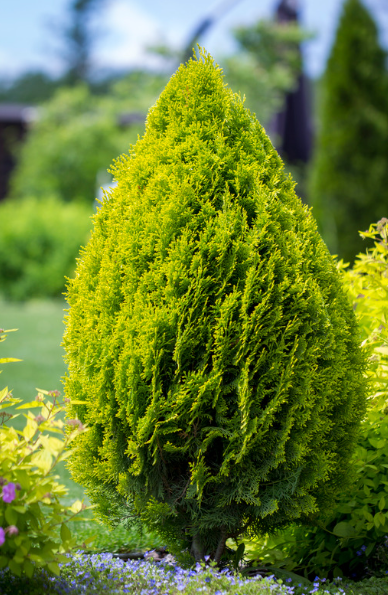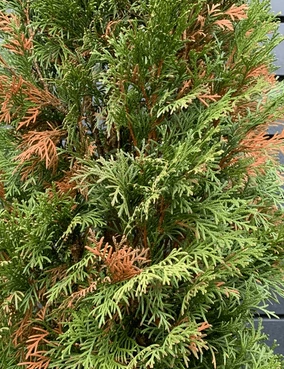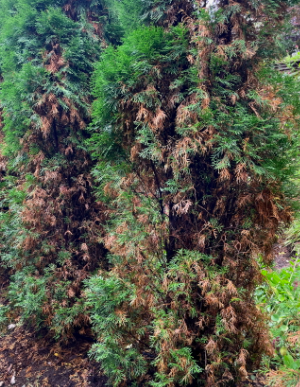Thuja Plant
Thuja occidentalis, commonly called Thuja, grows 10-20 ft tall, slow growth rate, prefers well-drained soil, full sun, medium moisture, not edible, and no medicinal uses.

Habit
Evergreen coniferous tree
Height
4 to 6 m
Growth
Slow to moderate
Soil
Well-drained, Sandy Loam
Shade
Partial shade or full sun
Moisture
Moderate
Edible
No
Medicinal
Yes (used in traditional medicine)
Origin
North America, Europe
Climatic Condition
Temperate, Subtropical
Temperature (°)
10°C to 25°C
Humidity (%)
50% to 60%
Potting media
50% Loam, 40% Sand, 10% Organic Matter
Fertilizers
Organic Fertilizer
Watering
Regular watering
Plant Weight
5 to 10 kg
Flowering Time
Spring to Summer
Soil Ph level
6.0 to 7.5
Water Ph level
6.0 to 7.0
Soil EC
0.5 to 0.8 mS/cm
Yield Per Plant
10 to 20 kg per plant
NPK ratio
10:10:10
life Span
15 to 30 years
Health Benefits
Ornamental, Wood Production
Suggested Grow Media or Potting Mix ?
50% loam, 30% compost, 20% sand
Suggested Fertigation/Fertilizers
Fertilize once in spring with slow-release fertilizer
Common Diseases and Remedies
Leaf Spot, Root Rot, Powdery Mildew, Rust, Anthracnose
Leaf discoloration, root decay, powdery coating, rusty spots, branch dieback
Copper sulfate, mancozeb, dithane
HEALTH BENEFITS
1. May help reduce inflammation: Thuja's antioxidants and other compounds may help reduce inflammation and improve overall health.
2. May have antimicrobial properties: Thuja may have antimicrobial properties that can help prevent infections.
3. May help improve respiratory health: Thuja's antioxidants and other compounds may also help improve respiratory health.

